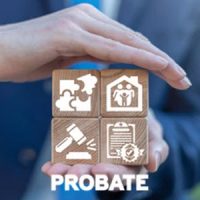Understanding the California Probate Code: Key Sections You Should Know

If you are dealing with the loss of a loved one in California, you need to understand the laws that govern probate. In California, the rules for managing a deceased person’s estate are set out under the Probate Code. This complex and intricate set of laws governs everything from initiating probate to distributing the decedent’s assets to heirs or beneficiaries. Whether you are an heir/beneficiary, executor, or creditor, understanding the key sections of the California Probate Code can help you avoid mistakes and safeguard your rights. Keep reading!
What Is the California Probate Code?
The California Probate Code is a collection of laws that govern how estates are managed after someone passes away. It applies whether a person died with or without a will. The California Probate Code includes, among many other things, how probate begins, how personal representatives are appointed, the duties and liabilities of personal representatives, the payment of debts and taxes, and how assets are distributed to heirs or beneficiaries. The code also covers guardianships, conservatorships, and trusts.
Key Sections of the California Probate Code You Should Know
Understanding key sections of the California Probate Code can help you better navigate your rights and obligations. It can help you avoid mistakes that can delay the probate process, lead to disputes, or result in legal liability. The following are some of the most crucial sections of the California Probate Code that you should be aware of, whether you are an executor, heir/beneficiary, creditor, or just a family member who wants to understand your rights and responsibilities;
Section 8000 – 8007: Commencement of Proceedings
This section of the Probate Code covers the initial steps for initiating probate proceedings. These sections explain who can file a petition for probate, the information that must be included in the petition, and how notice must be given to interested parties. Under these sections, you can also learn about the process for objecting to the appointment of a personal representative.
Section 8400 – 8577: Appointment of Personal Representative
These sections focus on the appointment and qualifications of personal representatives (executors and administrators). They cover who can serve, the order of priority among potential appointees, requirements such as posting a bond, and procedures for removal or disqualification.
Section 9000 – 9399: Creditor Claims
These sections explain how creditors are notified, the deadlines for filing claims, how claims are approved or rejected, and the procedures for paying valid debts. They also explain the priority of claims and estate liabilities. Simply put, section 9000 – 9399 ensures all valid financial responsibilities of the deceased are addressed before asset distribution.
Section 9600 – 9606: Duties and Liabilities of Personal Representative
California Probate Code Sections 9600 to 9606 outline a personal representative’s general duties and liabilities. These sections emphasize that personal representatives must act in the best interest of the estate and its beneficiaries, manage estate assets carefully, and obey all laws. These sections also address liability for breaches of duty.
Section 10800 – 10805: Compensation of Personal Representative
These sections address how personal representatives should be compensated for administering the estate. These sections outline the standard fee schedule based on estate value and explain how fees are calculated and requested.
Section 11640 – 11642: Final Distribution
These sections cover when and how a personal representative can petition the court for final distribution of the estate assets, including notice and approval procedures.
Contact The Probate Guy
If you have questions or need help with probate, contact the dedicated California probate attorney, Robert L. Cohen – The Probate Guy – today to schedule a telephonic consultation.
Southern California Probate Lawyer Serving Orange, Riverside, Anaheim, Whittier & Beyond.
Source:
leginfo.legislature.ca.gov/faces/codedisplayexpand.xhtml?tocCode=PROB

